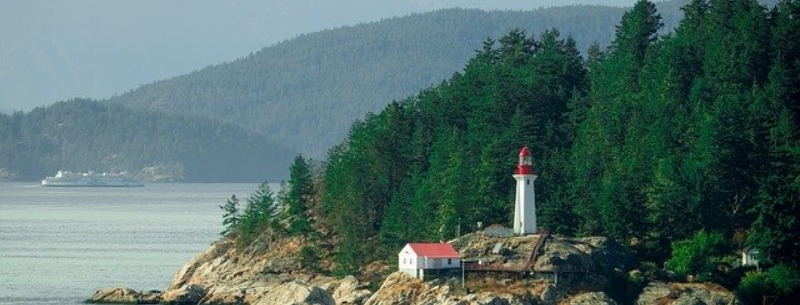2024 Vancouver Island Visitors Guide
Considered by many to be a piece of Canadian paradise, Vancouver Island is known for its laid-back artistic culture, stunning coastal scenery, and flowers, which are in bloom year-round. Known simply as ‘The Island’, this sought-after destination is separated from southwestern mainland BC by the Straight of Georgia and is accessible via ferry from Vancouver. At the southern tip of the Island is BC’s capital city, Victoria, a city whose streets and lanes are dotted with pubs and gardens, lending it a reputation of being a little piece of Britain.
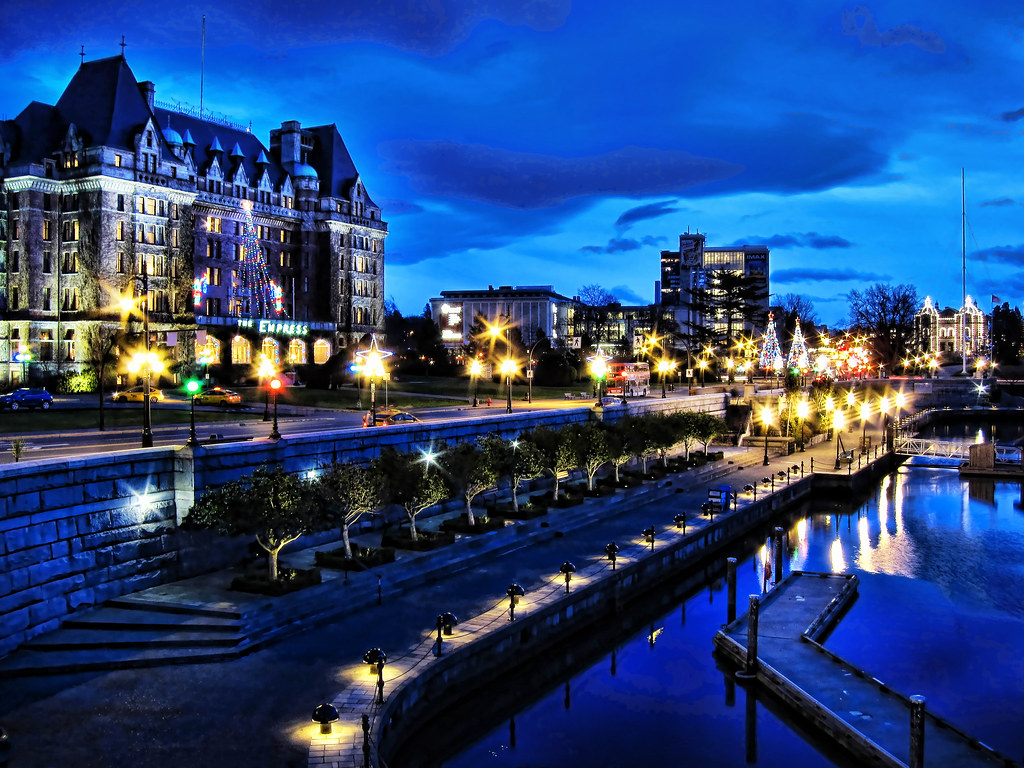
Historic Nanaimo is the second-largest city and gives way to the picturesque Oceanside Region. Campbell River is a famous whale-watching spot, while the waves of Tofino and Ucluelet are not to be missed. Strathcona Provincial Park, located near Comox and Courtenay, is considered to be the Island’s wilderness gem. The Island is one of those rare places where one can both ski and golf in the middle of winter, so it’s no wonder many visitors never leave.
Pacific West Coast Islands
Scattered in the Pacific Ocean just off of mainland B.C. are a multitude of islands with gem-like brilliance. Some have emerald rainforests, others polished communities, and all are surrounded by crystal waters. Each precious rock, from large to small, has its own story and its own rhythm, appealing to a variety of residents and visitors.
Vancouver Island is not only the largest of these islands but of the entire west coast of North America, being almost twice the size of Hawaii. Wedged in between Vancouver Island and mainland British Columbia are the Gulf Islands, comprised of thousands of islands and islets, but with only about 12 being regularly frequented. These islands are generally divided into the South and North Gulf Islands, with the Discovery Islands being a cluster within the North grouping.
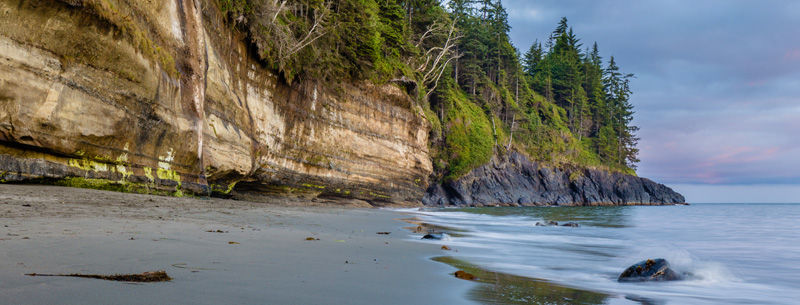
Rarely is a region so diverse that it can boast never-ending beaches, eclectic communities, ice-capped mountains, abundant wildlife, and a mild climate. But the Pacific West Coast has all of these things and more. So whether traveling for a romantic getaway, a family retreat or a wilderness adventure, this region is sure to provide a getaway location that will quickly become a treasured island of dreams.
South Vancouver Island
The most regal destination on Vancouver Island is the city of Victoria. This provincial capital has a distinct 1800’s Victorian air, largely due to its well-preserved heritage buildings and nurtured gardens and parks. The Inner Harbour is photogenic, as many vintage sailing vessels are berthed there. As well, as thousands of snapshots of the ivy-covered Fairmont Empress Hotel, which is a popular spot for high tea. The Royal British Columbia Museum has natural and modern history sections, as well as a First Nations area complete with totems and masks.
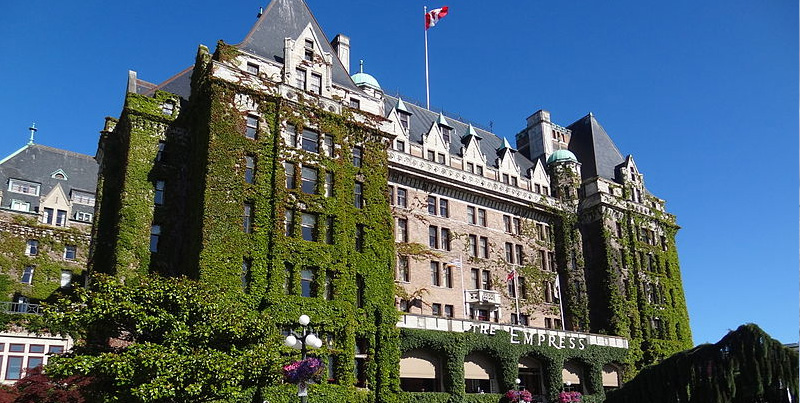
Just outside of Victoria is the Butchart Gardens. Once a limestone quarry, the site now flourishes with a million plants. In the summer, regular fireworks exhibitions and music performances are scheduled. Catching the spillover of tourism from Victoria is Sooke to the east. Many seek Sooke’s accommodations and amenities as the area is slightly quieter than Victoria, and yet still in a mesmerizing setting. Sooke Potholes Provincial Park is an exceptional point to watch salmon spawn, hike year-round, or take a refreshing dip in one of three potholes formed by erosion.
Just northeast is Duncan, where totem poles, numbering over 40 within the town and along the highway, pay homage to the area’s Cowichan First Nations people. Their culture, entwined with nature and earth, can be further understood at the absorbing Quw’utsaun Cultural and Conference Centre.
A bit further is Chemainus, where one can tour Canada’s largest outdoor art gallery. The over 30 Chemainus Murals depict the town’s colorful history.
Central Vancouver Island
Nanaimo is the second largest city on Vancouver Island and will be eternally associated with the delectable chocolate-custard treat, the Nanaimo Bar. The city is a transportation hub, both for vehicles and ferries.
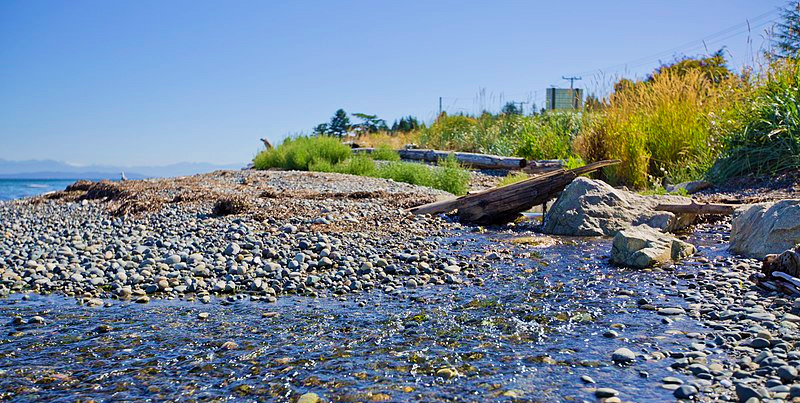
Travel directly west to Parksville and Qualicum Beach, two destinations that enjoy leagues of tourists in the summer on account of the wondrous shoreline. The grains of sand are vital to one of Parksville’s largest events — the Parksville Beach Festival — where a master class sandcastle competition takes place every August. Beachcombers are delighted at Qualicum Beach, as are spelunkers at nearby Horne Lake Caves Provincial Park, which trumpets one of the finest cave systems in B.C.
Vancouver Island Pacific Rim
Another summer hotspot is the Pacific Rim region of Vancouver Island, largely due to the Pacific Rim National Park. It is estimated that one million people frequent the park in summer alone. Pacific Rim National Park’s most popular beach is Long Beach, where bountiful species of birds and surfers flaunt their feathers. The park has several other beaches, plus an old-growth rainforest and the Nuu-chah-nulth archaeological sites.
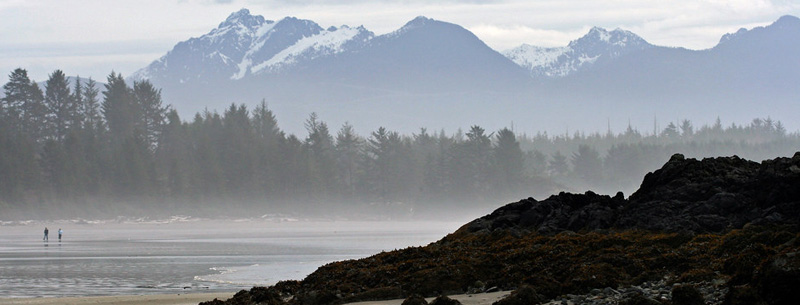
On either end of the park are the small municipalities of Tofino and Ucluelet, both rapidly developing a tourism reputation with their plentiful beachfront accommodations and tour/activity operators. A unique way to combine adventure and culture is to take a First Nations tour of scenic Clayoquot Sound.
Winter brings a different crowd to the Pacific Rim — those intent on watching cloud calamity from the cliffs. Storm watchers will quickly understand why the coastline is known as the Graveyard of the Pacific when hit with winds at hurricane strength — it is said there is a wrecked ship for every mile of coastline.
Taking a Break in Strathcona Park
Another tourism peak of the Pacific Rim is the West Coast Trail. Thousands participate in extreme hiking/camping adventures here each year. The trail runs from Port Renfrew to Bamfield and is a rigorous 73 km (45 mi) that should only be taken on by experienced hikers. Excursions on the trail must be booked months in advance since ecological concerns have prompted rules that stipulate that only a certain amount of people can be on the trail at one time.
Northern Vancouver Island
Northern Vancouver Island is the Canadian lumberjack shirt of the region — rugged and bright. The pristine terrain consists of deep forests and mountains with glaciers clinging to the sides. One of Vancouver Island’s most northern communities is Port Hardy, a common stop for travelers carrying on to the Inside Passage towards Alaska, as well as the Discovery Coast Passage. Bold explorers often seek out the unpredictable wilderness of Cape Scott Park, where, without warning, the weather can become volatile.
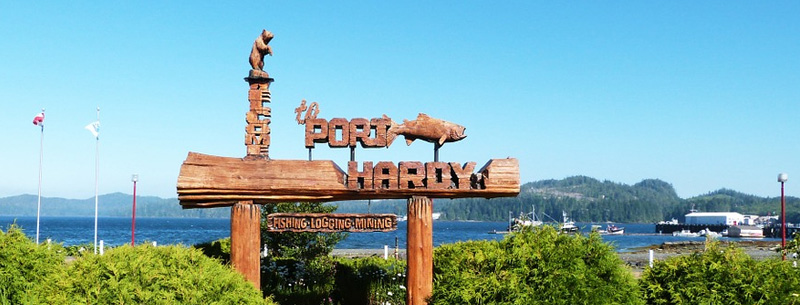
Just south of Port Hardy are Telegraph Cove and Port McNeil, both considered to be excellent vantage points for whale watching. Along the Johnstone Strait, sightings of Orcas (killer whales), seals and sea lions are frequent. Those who wish to venture out among these creatures are encouraged to take a kayaking tour.
Roughly three hours southeast is Campbell River, the self-proclaimed salmon capital of the world. Learn a lesson in perseverance by watching these fish thrash upstream to spawn.
Gulf Islands
The Gulf Islands, an enormous collection of islands and islets set in the Strait of Georgia, are the haunt of urban escapees and artists. They are generally divided into two categories, north, and south. Each cluster has several prominent islands, most with a distinct population that may vary from bohemian to traditional. Life on these islands is meant to be enjoyed, not endured. Many feel it is refreshing to be in a friendly, familiar atmosphere, one where everyone either knows your name already or learns it quickly.
Southern Islands
Salt Spring Island is the most populated and traveler-friendly of the Gulf Islands. The hilly terrain and lush forests are a drawing card for a population where one cannot throw a stone without hitting an artisan or wellness guru.
The Pender Islands, two islands joined by a wooden bridge, are also adapted to tourism. Climb 244 m (800 ft) to the peak of Mount Normand for an absolutely stunning view of the San Juan Islands. Or forget the scenery and drop a small fortune at the vibrant farmer’s market.
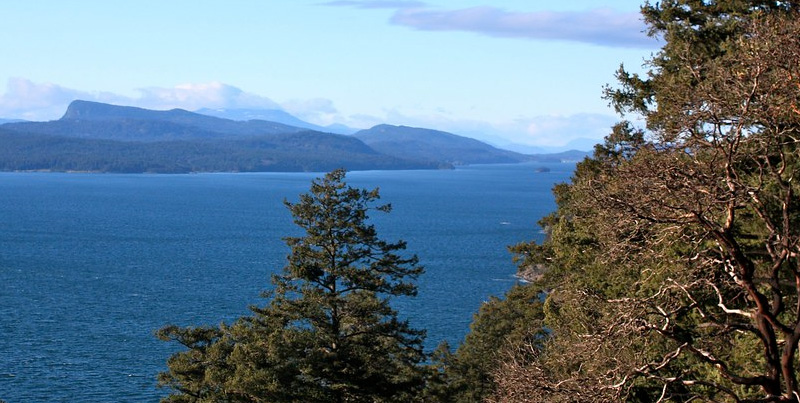
Mayne Island, also known as Apple Island due to the fruit orchards planted by early settlers, entices cyclists with its flat roads and sparse traffic. Lighthouse enthusiasts may want to visit the Active Pass Lighthouse, where the beams have been assisting sailors maneuver since 1885.
Discovery Islands
Campbell River and mainland B.C. flank the Discovery Islands, which are notorious for jaw-dropping scenery and frequent wildlife sightings. Everyday woes are set adrift when sea kayaking, snorkeling or spying on such playful sea creatures as seals and porpoises in the well-protected waters. The more popular islands are Quadra and Cortes. Quadra Island is a distinguished sport-fishing destination and host to Rebecca Spit Provincial Park with its trove of recreational pursuits. Cortes is at the base of Desolation Sound and has a varied topography of gorges, beaches, and lakes. The serene setting of the island is perfect for the renowned wellness retreat Hollyhock.

Northern Islands
Hornby Island is considered a worthwhile indulgence when in the Gulf Islands. Rivaling Hawaii’s beaches is Hornby’s Tribune Bay shoreline, where the white sands and temperate waters soothe the spirits of the most adamant city dweller.
Top Vancouver Island Attractions
Chesterman Beach
Tofino BC
Chesterman Beach is the pride of the Tofino area. This 2.4 km (1.5 mi) strip is made of hard-packed sand, which makes it exceptional for walking, surfing, and bike riding. While at the beach, wander down at low tide to explore the marine life in the tidal pools of Frank Island.
Elk Falls Provincial Park
Campbell River BC
Elk Falls Provincial Park features a large waterfall and some of the best year-round salmon fishing in Canada. the park is located two kilometers from downtown Campbell River. The campsites are located off the Quinsam River, which is packed with salmon.
McLean Mill National Historic Site
Smith Road Port Alberni, BC
The McLean Mill National Historic Site is home to the only steam-operated sawmill in Canada. Visitors are transported back in time to the exciting era of the lumber industry in Port Alberni through sawing demonstrations, stage shows and historic buildings like the one-room schoolhouse. A cafe and banquet facilities are available on-site. The mill is located on forested land just 8 km (5 mi) northwest of Port Alberni.
Newcastle Island Provincial Marine Park
Newcastle Island Nanaimo BC
Newcastle Island became a Provincial Marine Park in 1961 when the nearby city of Nanaimo granted it to the province after having acquired the island from the Canadian Pacific Railway in 1955. Situated in Nanaimo Harbour, Newcastle Island possesses a rich natural and cultural history. The island’s shoreline is dominated by steep sandstone cliffs and ledges with some sandy gravel beaches. There are many caves and caverns along the shoreline, providing an appealing contrast to the upland that is covered with Douglas-fir, Arbutus, Garry Oak, and Dogwood trees.

Pachena Point Lighthouse
Bamfield BC
The last original wood lighthouse tower on Canada’s west coast, this light is also still maintained by a lightkeeper. The lighthouse was constructed in 1907 after the wreck of Valencia and was first lit in May 1908. The glass lens, 3 m tall, 2.5 m wide and weighing 400 kg was brought by boat around Cape Horn. The 1000-watt bulb puts out four million candlepower and is visible from Washington State’s Olympic Peninsula.
Royal British Columbia Museum
675 Belleville Street Victoria BC
The Royal British Columbia Museum is a place of discovery. Through three unique galleries, the museum showcases the human and natural history of British Columbia and features periodic exhibitions of international renown. Highly realistic and inviting displays, such as the Ice Age and Coastal Forest dioramas, provide visitors with a sense of having truly experienced the authentic settings of many exhibits.
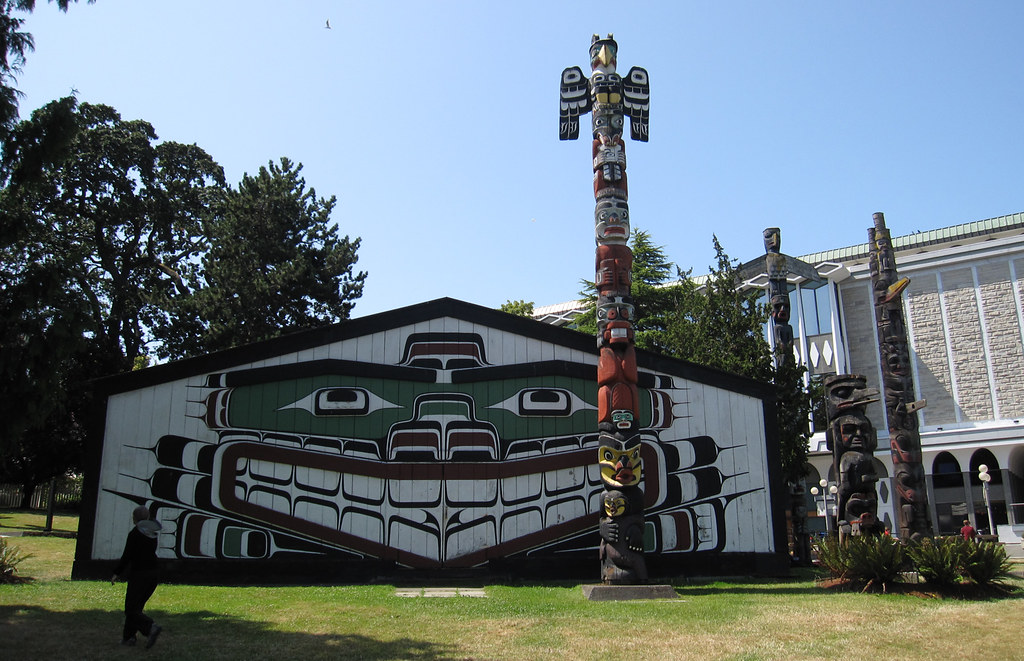
Pacific Rim National Park
2185 Ocean Terrace Road Ucluelet BC
The magnificent west coast of Vancouver Island between the Pacific Coast Mountains and the ocean has been made into a wonderful national park. The park is comprised of three parts, Long Beach, the West Coast Trail, and the Broken Group of Islands. The long and wide sandy beaches are spectacular as is the-old growth of temperate rain forest.
Weather in Vancouver Island
Mild and moist basically sums up the weather conditions in this territory. Generally warm in each season by Canadian standards, the summers reach highs in the mid-20s ºC (70 to 80ºF), with winters just below 0ºC (32ºF). The catch is the precipitation — the Pacific West Coast rainfall is among the heaviest in the world. The Gulf Islands tend to be drier than their Vancouver Island neighbor, as the land formations act as a shield. In general, dress in preparation for wetness and almost constant ocean breezes. For those who must have snow for holidays, try the Comox Valley area and north of Campbell River on Vancouver Island, where alpine and Nordic ski sites welcome bountiful powder snow from mid-December to late April.
Vancouver Island Transportation
Any illusions of being Robinson Crusoe on these West Coast islands are futile since there is little chance of being marooned. Every community can be accessed by land, air, or water, often by at least two of these. Ferry service from Mainland BC and Washington State to Vancouver Island is frequent, and connections to most of the islands are available. Air services range from major airlines to chartered flights and include helicopter and floatplane services as well. Vancouver Island is extremely drivable — it takes approximately six hours to travel from the deep south of Victoria to the northernmost community of Port Hardy. Most destinations are within a day’s drive. Rental cars and taxis can be arranged on Vancouver Island, but not as easy on the other islands.
To watch the sights instead of the signs, travel by motorcoach. One can go by bus over the ferry and use the regional service on Vancouver Island. Try expending calories instead of fuel by biking or paddling. For more information on transportation, please read Transportation on Vancouver Island.
History of Vancouver Island
The names of the waters and land formations in the area indicate just how diverse the origins of each island are since there is quite a mix of First Nations and European titles.
Evidence of human occupation dates back some 2000 years. Several First Nations groups resided in the area, many living as nomads, arriving and departing according to the season. Eventually, three main groups formed: the Nootka, Kwakwaka’wakw, and the Coast Salish. These people wove an intricate social fabric of rituals, spiritualism, and art, and left such legacies as totem poles, longhouses, and fine crafts behind.
The first recorded European visitor was Captain James Cook, who came upon Nootka Sound by what is now Estevan Point on the central west side of Vancouver Island. Spanish explorers were close behind. Over the next five decades, both the British and the Spanish fervently scouted the area, vying for trading and ownership rights. The countries were at the brink of war when the Nootka Convention was signed in 1790, allowing both Spain and Britain to occupy the area. The treaty enabled two early explorers, Captain George Vancouver and Juan Francisco de la Bodega Quadra to combine their efforts in surveying the area in 1792.
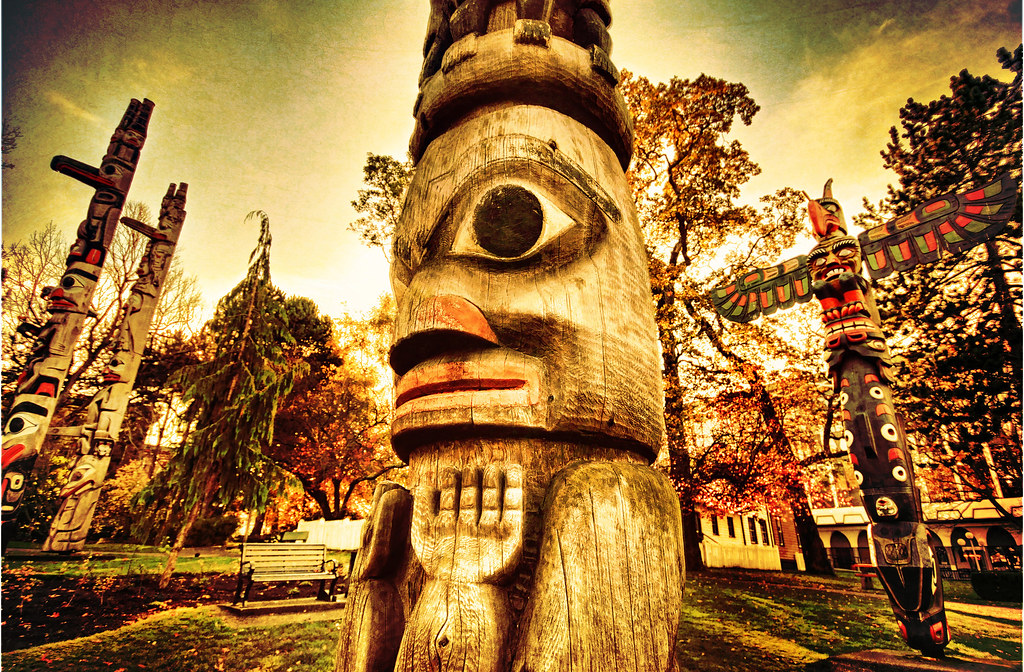
The Spanish eventually ceded to the British, who hastily increased British settlement. The Hudson’s Bay Company moved into Vancouver Island in 1843 and dubbed the area Fort Victoria.
When the Fraser Gold Rush fever hit in the mid-1800s, the area hosted fortune seekers from such destinations as the U.S.A. and China as they ventured north. One island, in particular, Mayne Island, became a bustling rest stop between Vancouver Island and the mainland. Miners Bay on Mayne became one of the first Southern Gulf Island settlements due to the heavy traffic. Although initially driven to find riches, many of the gold seekers felt the natural wealth of the island was satisfying enough and lingered on.
It was around this time that the Hudson’s Bay Company left Fort Victoria, leaving behind the city of Victoria. Vancouver Island and mainland BC formed the colony of British Columbia in 1866, which later became the 6th province of Canada in 1871.
The industries of fishing and logging flourished, and are still active today. Tourism, largely due to the expansion of ferry service, continues to rapidly increase, offering something for most tastes and budgets. As for the residents of these islands, an assortment of cultures, ages, and personalities abound, with one commonality — most prefer the things that are simple, natural, and fresh over complex, processed and re-circulated.
